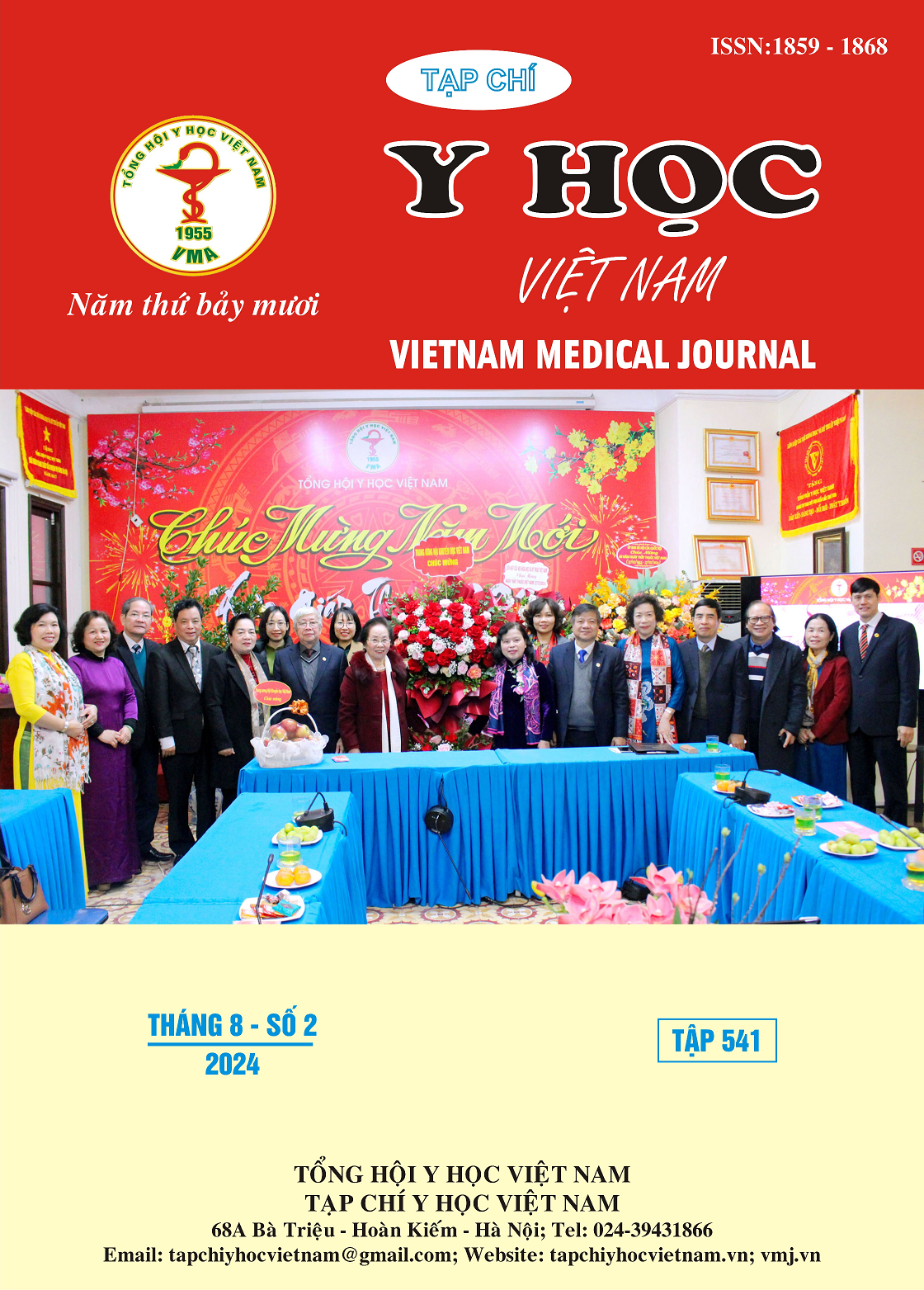DLQI QUESTIONNAIRES APPLICATION TO EVALUATE THE QUALITY OF LIFE OF PATIENTS WITH KELOID VISITING HO CHI MINH CITY HOSPITAL OF DERMATO-VENEREOLOGY
Main Article Content
Abstract
Objectives: To Apply the DLQI questionnaires to evaluate the quality of life of patients with keloid scars. Methods: A case series study on 102 patients with keloid(s) examined at Ho Chi Minh City Dermatology Hospital of Dermato-venerology from December 2022 to August 2023. Results: Median age was 26.5 years. The female/male ratio was 1.5/1. The main reason why patients come for examination is aesthetics (61.8%). 15.7% of patients had a family history of keloids. 75.4% of patients had never been treated before. Most keloids were located on the chest (46.1%). Scar area ranged from 0.5 cm2 to 400 cm2, with a median of 5 cm2. 36.3% of the patients experienced pain, 77.5% experienced itching. 5.9% had mobility difficulties. The mean VSS score was 7.96 ± 2.65. DLQI scores ranged from 0 to 12, median is 3. Most affected subscales were “Symptoms and Feelings”. A higher DLQI was seen in those with age of onset before age 50, pain, itching, and those with many scars. There is a weak positive correlation between DLQI and scar area; between DLQI and VSS. Conclusions: Management of keloid scars requires not only assessing the severity of the scar (pigmentation, height, width, flexibility) but also recognizing the impact on quality of life. The DLQI questionnaire enables physicians to measure the quality of life in these patients. Most patients with keloid scars have their quality of life affected. Quality of life is related to age of onset, scar severity, pain, itching, area, and number of scars
Article Details
Keywords
DLQI, keloid, quality of life.
References
2. Quân Trần Sở. Đặc điểm dịch tễ và lâm sàng trên bệnh nhân sẹo phì đại, sẹo lồi tại khoa da liễu-thẩm mỹ da của bệnh viện đại học y dược tp. Hồ Chí Minh. Luận văn thạc sĩ Đại học Y Dược TPHCM. 2022;
3. Bijlard E, Kouwenberg CA, Timman R, Hovius SE, Busschbach JJ, Mureau MA. Burden of Keloid Disease: A Cross-sectional Health-related Quality of Life Assessment. Acta Derm Venereol. Feb 8 2017;97(2):225-229.
4. Lu W-s, Zheng X-d, Yao X-h, Zhang L-f. Clinical and epidemiological analysis of keloids in Chinese patients. Archives of dermatological research. 2015;307:109-114.
5. Ramakrishnan Km, Thomas Kp, Sundararajan Cr. Study of 1,000 patients with keloids in South India. Plastic reconstructive surgery. 1974;53(3):276-280.
6. Reinholz M, Poetschke J, Schwaiger H, Epple A, Ruzicka T, Gauglitz G. The dermatology life quality index as a means to assess life quality in patients with different scar types. Journal of the European Academy of Dermatology & Venereology. 2015;29(11):2112-2119.
7. Shaheen A, Khaddam J, Kesh F. Risk factors of keloids in Syrians. BMC Dermatol. Sep 20 2016;16(1):13.
8. Sitaniya S, Subramani D, Jadhav A, Sharma YK, Deora MS, Gupta A. Quality of life of people with keloids and its correlation with clinical severity and demographic profiles. Wound Repair Regeneration. 2022;30(3):409-416.


